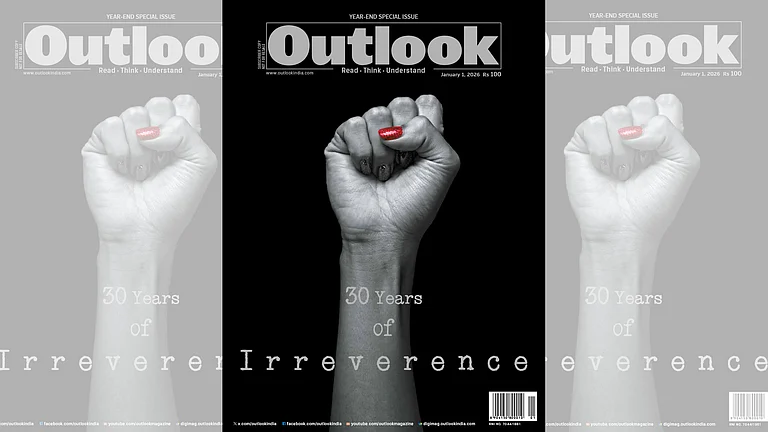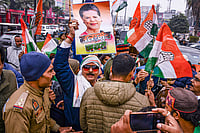WHY are subsidies bad? The conventional anti-subsidy argument is that a subsidy is simply a political quick-fix. Dole out some subsidy and it glorifies the role of the state (and the particular government in power) as a provider of jobs and protector of the poor—based on the premise that the higher the subsidies, the greater the benefits to public.
Subsidies, however, are far more dangerous than conventional critics suggest. For, the usual gripes ignore the larger economic burden of subsidies, which is to highly distort prices and costs, offer needless protection and prevent an efficient market in products/services. Were all the subsidies and benefits given through industry ostensibly to make things available to the public cheap, to be phased out, even scrapped, not only would it not lead to a price hike but, by allowing a proper market, would even bring prices down over time. Even the genuinely needy would have a better life in the long term. Take fertiliser subsidies, accounting for over Rs 8,000 crore in the 1996-97 Budget spend, going explicitly to industry towards retention price for indigenous urea (based on a 12 per cent return to producers), import of urea, and concessional sale of decontrolled phosphatic and potassic fertilisers. The last, hiked to a massive Rs 2,224 crore this year, is a highly inefficient mechanism allowing states to virtually control the price to farmers.
How fertile: How far fertiliser subsidies have helped raise food production is eminently debatable, for the overall picture is one of stagnation. Over 1990-95, even as subsidies doubled, fertiliser consumption rose from 12.5 million tonnes (mt) to 13.8 mt, imports from 2.7 mt to 3.1 mt, and fertiliser use per hectare from 70 kg to 75.8 kg. All this despite good monsoons which ultimately decide fertiliser off take.
Not without reason. Fertiliser subsidy goes to cover the plant-specific retention price scheme and cost to farmers in varying degrees, but overwhelmingly it serves to protect inefficient producers against effi-cient ones. It makes sure that however incompetent a producer, he will still make a 12 per cent return on investment. It distorts the price equation of urea, phosphatic and potassium fertilisers. It encourages overuse of urea by providing it at unrealistically low prices. Overall, the subsidy makes the sector resistant to growth and competition, and makes identifying the real beneficiaries extremely tough.
Says Dr Rakesh Mohan, former economic adviser to the Industry Ministry: "As we get nearer international prices in agriculture, the case for subsidising inputs become weaker. We do need to be concerned about food security, but the question is at what level? Not at the cost of subsidising producers." If producing a fertiliser is costlier than importing it, it is good economics to import it and sell at cost price. That takes care of both operating cost and the strategy of supplying fertiliser cheap to farmers, says Pranab Sen, consultant to the Planning Commission.
On slippery ground: Fertiliser units get sub-sidised naphtha, imported duty-free, to keep costs down, and the cost is recovered from users of other fuel, making the petroleum sector another fertile ground for price calisthenics. Crude oil and fertilisers are among our biggest imports already, amounting to one-third of total value along with iron and steel and edible oils. In the petrogoods sector, where all prices are fixed by the Government, subsidy is given for petrol, aviation turbine fuel, domestic LPG, diesel and kerosene (which is also imported duty free). The subsidy cut in July leading to the price hikes has brought the first two close to import price, but subsidies on the last three hog most of the Rs 9,980-crore bill.
This has resulted in several market distortions. Domestic carmakers go to considerable lengths to produce diesel-driven cars; diesel and kerosene are diverted to the extent of 40 per cent either to the free market or for adulterating more expensive fuel. Farmers are taking to diesel pumpsets leading to overuse of groundwater resources, and power-starved industry to diesel gensets. A similar overuse/oversupply of diesel in public transport (which again is subsidised by states) has several direct and indirect negative fallouts, since it is unmatched by a similar rise in negotiable roads. Cheap LPG has led to irresponsible overuse and mushrooming of caterers in the informal sector, supplying food of dubious quality at exorbitant prices.
Kerosene apart, none of these products are used by the poor. And even the price of kerosene has been subsidised down to such absurd levels (it is lower than the cost of crude oil) that there exists a thriving black-market: the impoverished have to buy much of their kerosene at far above the administered price. A lower subsidy would have made for a much more equitable and honest system. At the other end, since import duties on finished products are less than that on crude, refineries are assured a 12 per cent return on net worth, helping refiners, marketers and distributors at the cost of crude producers. Says Mohan: "The sooner we get out of the administered price mechanism, the better."
Farmer power: Losses of state electricity boards (SEBs) are routinely covered by subsidy. And subsidy on account of agricultural power sale hogs three-quarters of the total. In 1992-93, cost of supplying power to farmers was 139 paise per KwH, and recovery from the farmer was a ridiculous 15.4 paise. Industrial power tariffs, conversely, are close to global levels. "This actually means cross-subsidisation of agriculture by industry," says D.H. Pai Panandiker, adviser, RPG Group. In Andhra Pradesh, the power subsidy bill last fiscal year, was 25 per cent more than the drain on account of its Rs 2 per kg rice scheme. The financially tottering SEBs boards have effectively inhibited the entry of private producers and distributors, since they are not sure that the SEBs, which will be the private player's customer, will have the money to pay them. This has prevented power supply growth, and is fast leading the country into a vortex of darkness.
But the worst of these subsidies go to sick and inefficient industry, enjoying government protection, loan write-offs, and steady infusion of soft working capital. The National Accounts include these implicit subsidies arising from the losses of departmental enterprises. In end March 1994, a mere 1,915 large and medium units blocked Rs 8,152 crore, or 70 per cent of the bank credit trapped in 2.58 lakh sick units.
Pampering the ailing: Says Mohan: "There's a clear case of subsidy to sick units, most of which were taken over by the Government at some point of time." Economist Pranab Bardhan calls the public sector "a charitable dispensary for sick units". As a result, a colossal investment in public sector yields a return of only 2.5 per cent of capital employed. It would be a very poor negative, were it not for the highly profitable oil companies. Finance Ministry sources feel that were the Government to wind up all the losing units while retaining the labour and continued paying the wage bill, the cost to the exchequer would be much less than of running them. Ironically, this is also one of the major reasons of the current sickness in the banking industry. According to Shashank Bhide of the NCAER, differential credit rates to different sectors affect economic activity and services across the board. As well as creating non-performing assets in banks themselves, for which the governments at the Centre and states are primarily responsible.
According to a 1995 World Bank study, Bureaucrats in Business, even if PSUs are made to face a hard budget, they could always access hidden subsidies like "soft loans which are repeatedly rolled over or even wiped off the books, converting the loan into a direct transfer". These are also the waterbed effect of efforts to reduce overt subsidies. This Budget gives away Rs 1,270 crore so that sick PSUs can pay wages, and another Rs 449 crore to write off their interest burden. Add to it Rs 2,123 crore of accumulated losses of Delhi Transport Corporation, also to be written off, and we're looking at a few still-born core sector projects.
Public burden: A highly funds-absorbing, loss-making public sector depresses the national savings rate, while at the same time raising public debt and interest obligations, thus creating excess demand for scarce capital and raising its cost. It pays and raises wages/salaries for a vast work-force without any improvement in productivity, fuelling inflation. And creates unequal and inefficient markets in products/services manufactured/sold by the public sector. None of these help the public. Take the case of Modern Foods, one of whose products is bread. The Government gives a subsidy so that the company can sell bread at Rs 5.50 per 200 gm, while private bread makers' sale price is Rs 6. This not only discriminates against consumers who do not get Modern bread, but might even prompt other producers to cut cost at the expense of quality or volume, distorting the entire bread market.
Such price controls, along with licensing and high import tariffs, have traditionally regulated and protected industry. Unlicensed five years ago, industry is free to grow and compete now, but protection continues in the form of tariffs (average 28 per cent and peak 50 per cent). Says Mohan: "The lower the input tariff and the higher the output tariff, the higher the effective protection." Also, industry enjoys some 28 tax shelters (including those for infrastructure projects), prominent among which are exemptions for export-oriented units, backward area and depreciation.
Less taxing times: According to Indira Rajaraman of NIPFP, tax as a percentage of profit before tax (PBT) has fallen in the '90s, especially sharply since 1993, to 18 per cent now, even though PBT stays at 7-8 per cent across all companies making profit or loss. This proves the widespread exploitation of tax-reducing provisions, especially the accelerated write-offs on plant and machinery. Worse, "such tax incentives prompt misdirected creation of additional capacities", she feels. And the minimum alternate tax (MAT), which Panandiker alleges has nullified all exemptions, may serve to raise revenues only marginally. For one, as Mohan says, "companies who will pay MAT still pay only 12.9 per cent compared to the nominal corporate tax rate of 43 per cent". For another, most zero-tax payers are confident of escaping the dragnet with a little help from chartered accountants.
It's easy to see how tax shelters distort government revenues and industrial development. The 100 per cent depreciation allowance is actually a subsidy by another name, allowing immediate tax reduction of 43 per cent of the value of the asset and prone to misuse, over invoicing and ficti-tious billing. Accelerated depreciation helps only high capital intensive industry, to the detriment of the services sector, the lever of industrial and employment growth in most countries including India. Removing all shelters and reducing overall tax rate will allow all companies to show higher earnings and raise capital, promoting wider development. And it's a demand even industry confederations support.
According to a study by ICRIER, which the Government is using as one of the bases for its white paper on subsidies, the share of taxes in GDP was 16.24 per cent in 1992-93, only marginally higher than that of subsidies at 15.2 per cent. The study only estimates the cost to the Government of providing goods and services and its recovery, and would not include the numerous industrial sops, the economic effects of most of which are too tough to quantify. Quips Sen of the Planning Commission: "When the Government takes over private land for own or private projects, often at a compensation lower than market price, where does the subsidy go?" Industry argues that the concessions, direct or indirect, are a result of the Government's failure to provide certain infrastructure. Few, however, can escape the fact that it's an idea whose time has definitely gone by.


























